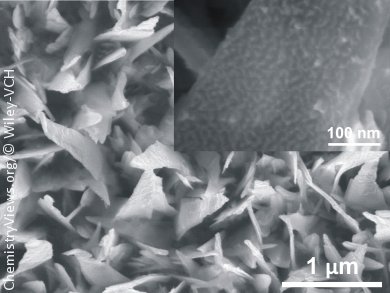Photoelectrochemical cells offer the possibility to convert solar energy to store chemical energy through the splitting of water into molecular oxygen and hydrogen. Hematite (α-Fe2O3) has emerged as a promising semiconductive photoanode material owing to its favorable optical band gap, excellent chemical stability in aqueous environments, high abundance, and low cost. However, the poor conductivity and extremely short hole diffusion length remain a problem, but can be overcome in some measure by the use of dopants.
An elegant solution has been found by Patrik Schmuki and co-workers, University of Erlangen–Nuremburg, Germany. They have prepared hematite nanoflakes doped with SnIV by direct annealing in a flame using SnCl4 as precursor solution. The strategy is interesting as it provides an alternative way to incorporate Sn doping without forming insulating FeO and Fe3O4 layers underneath hematite nanoflakes. The flame-annealed Sn-doped sample showed enhanced photoelectrochemical performance compared to samples for which classic furnace annealing was used.
The improvement in photocurrent can be attributed to the fast direct heating that maintains the nanoscale morphology, leads to optimized Sn decoration, and minimizes detrimental substrate oxidation effects.
- Enhancing the Water Splitting Efficiency of Sn-Doped Hematite Nanoflakes by Flame Annealing,
L. Wang, C.-Y. Lee, A. Mazare, K. Lee, J, Müller, E. Spiecker, P. Schmuki,
Chem. Eur. J. 2014.
DOI: 10.1002/chem.201303427




